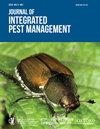城市灰管理和绿宝石灰蛀虫(鞘翅目:灰蠹科):事实、神话和操作综合
IF 2.7
3区 农林科学
Q1 ENTOMOLOGY
引用次数: 0
摘要
北美白蜡树的生存受到了祖母绿灰螟(EAB),一种破坏寄主维管系统的韧皮部食性甲虫Agrilus planipennis (Fairmaire)。在白蜡是主要上层物种的森林地点,EAB造成的死亡可以大大改变条件,对生态系统产生潜在的级联效应。在城市森林中,灰树通常非常丰富,并提供了一系列生态系统服务,因为它们生长迅速,能够承受城市环境的压力,在EAB之前,害虫负荷低。在美国,未来30年管理城市白蜡树EAB的年化成本估计接近18亿美元。许多成本效益分析表明,用系统杀虫剂保留成熟的白蜡树比在城市地区替换这些树更具成本效益。城市白蜡树的有效保护取决于在EAB损伤破坏将杀虫剂输送到树冠的维管系统之前,系统地部署杀虫剂。鉴于EAB的持续蔓延,及时管理对于保护城市灰冠层至关重要。在过去的二十年里,我们遇到了持续的神话,这些神话阻碍了采取保护措施来保护最近受到EAB侵扰的社区的城市灰烬。在这里,我们回顾了这些神话,并以研究为基础的证据来反驳它们,这些证据支持并证明了灰管理计划的合理性。最后,我们利用IPM的5个基本原则概述了城市森林EAB管理的方法。本文章由计算机程序翻译,如有差异,请以英文原文为准。
Urban ash management and emerald ash borer (Coleoptera: Buprestidae): facts, myths, and an operational synthesis
Survival of North American species of ash (Oleaceae: Fraxinus spp. L.) is threatened by emerald ash borer (EAB), Agrilus planipennis (Fairmaire), a phloem-feeding beetle that destroys the vascular system of its host. In forested sites where ash is a dominant overstory species, mortality caused by EAB can substantially alter conditions, with potentially cascading effects on ecosystems. In urban forests, ash trees were often abundant and provided an array of ecosystem services because of their rapid growth, capacity to withstand stressful urban conditions and prior to EAB, low pest load. Annualized costs of managing EAB on urban ash trees over the next 30 yr in the United States has been estimated to approach $1.8 billion. Numerous cost-benefit analyses have demonstrated that it is more cost effective to retain mature ash trees with systemic insecticides than to replace these trees in urban areas. Effective protection of urban ash trees depends on deployment of systemic insecticides before EAB injury disrupts the vascular system that transports insecticide to the canopy. Given the ongoing spread of EAB, timely management is critical for protecting urban ash canopies. Over the last 2 decades, we have encountered persistent myths that have hindered the adoption of protective measures to preserve urban ash in communities recently infested by EAB. Here we review these myths and counter them with research-based evidence that supports and justifies an ash management program. Finally, we use the 5 basic tenets of IPM to outline an approach for managing EAB in urban forests.
求助全文
通过发布文献求助,成功后即可免费获取论文全文。
去求助
来源期刊

Journal of Integrated Pest Management
Agricultural and Biological Sciences-Insect Science
CiteScore
5.80
自引率
3.60%
发文量
24
审稿时长
25 weeks
期刊介绍:
Journal of Integrated Pest Management is an open access, peer-reviewed, extension journal covering the field of integrated pest management. The Editors-in-Chief are Dr. Marlin E. Rice (formerly with Iowa State University) and Dr. Kevin L. Steffey (formerly with the University of Illinois). The journal is multi-disciplinary in scope, publishing articles in all pest management disciplines, including entomology, nematology, plant pathology, weed science, and other subject areas.
 求助内容:
求助内容: 应助结果提醒方式:
应助结果提醒方式:


